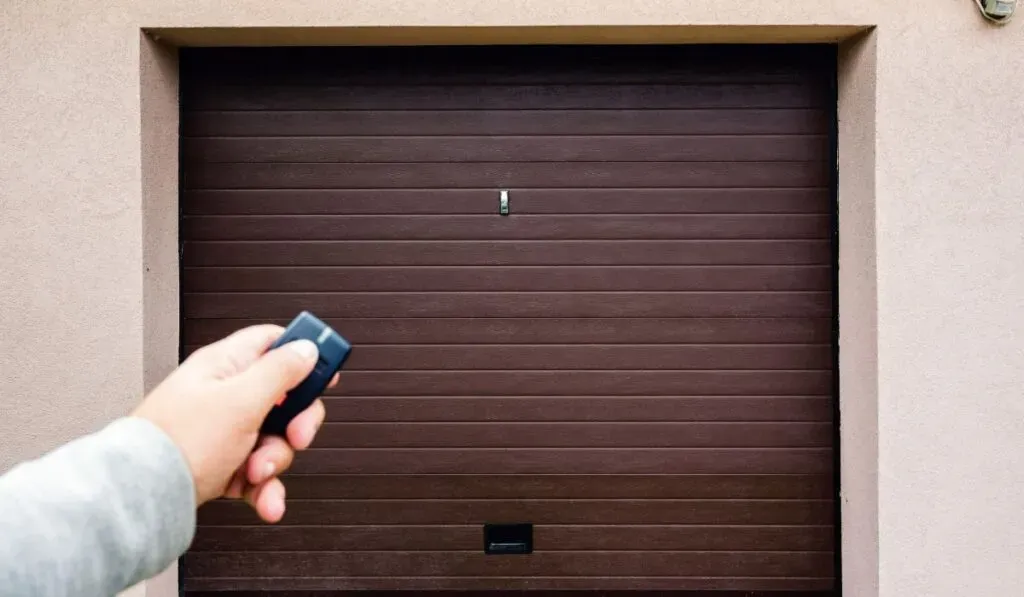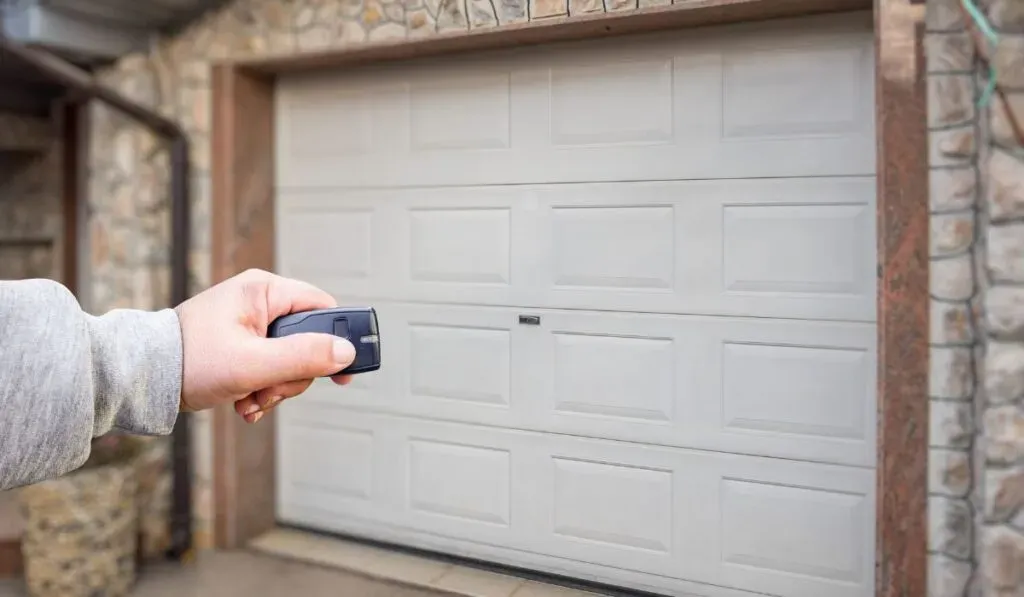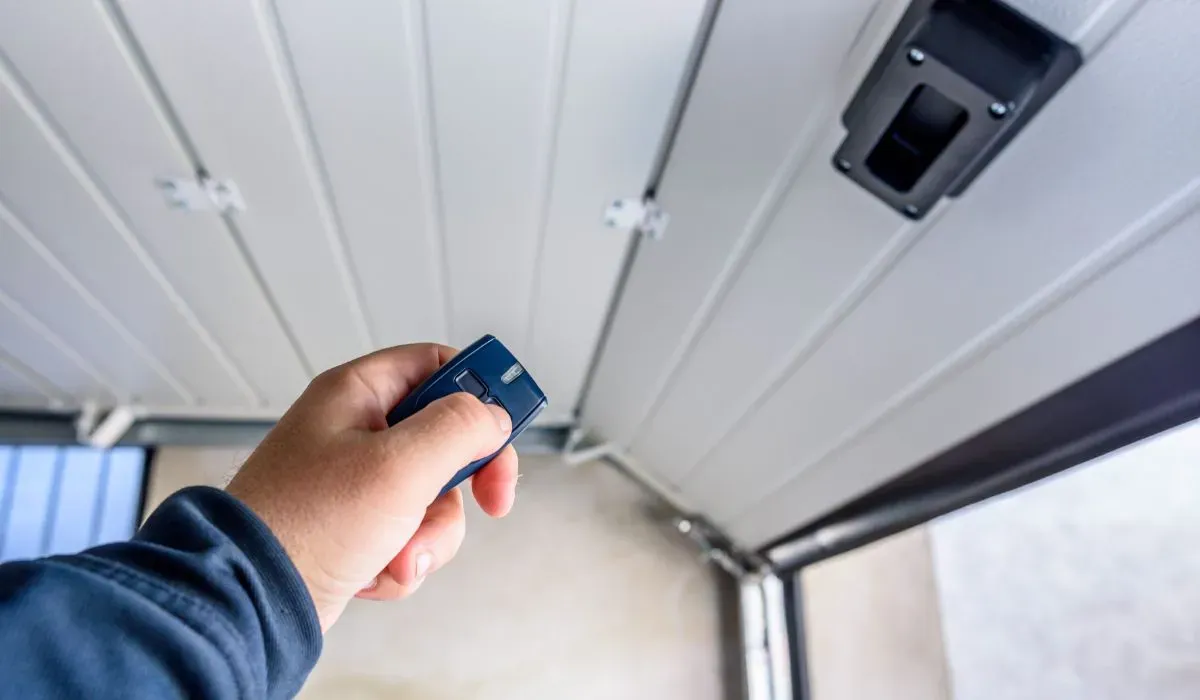Garage door opener range issues can often be traced to interference sources, antenna orientation, and sensor problems, such as the garage door’s excessive force error or intermittent operation. At Gulliver Garage Doors, we provide tips on troubleshooting garage door sensors, using ferrite chokes, and ensuring compatibility with LED bulbs and the Security+ 2.0 system for reliable garage door repair.
Understanding Garage Door Opener Range Issues
Garage door openers sometimes have range issues. These problems can stop your garage door from working properly. Here are some usual troubles:
- Weak Signal: You press the remote, but the door does not move.
- Intermittent Operation: The door works sometimes, but not always.
- Complete Signal Loss: The remote won’t work at all.
- Range Issue: You have to be super close for it to work.
- Spotty Connectivity: The signal starts, then drops during use.
These problems can seriously mess with how your garage door works. They make using the door annoying and slow.
Factors Affecting Garage Door Opener Range
Many things change how far your remote’s signal can reach. Knowing these helps fix range problems:
- Distance from Opener to Remote: The signal gets weaker the farther you go.
- Obstructions: Walls and metal stuff in the garage block signals a lot.
- Interference from Other Electronic Devices: Gadgets like Wi-Fi routers or cordless phones can mess up signals.
- Antenna Placement and Orientation: Where and how you put the antenna matters a lot for signal strength.
- Battery Life of Remote: Weak batteries make the remote send poor signals.
- Remote Control Condition: If your remote is broken or worn out, it won’t send signals well.
Metal in the garage door often blocks signals, too. EMI, which means electromagnetic interference, can cause trouble as well. Radio frequency interference from other devices might stop the signal, too. Garage walls sometimes kill the signal if they’re thick or metal-lined. Keep chargers away—they can cause interference near your opener.
Testing Your Garage Door Opener’s Range
Here’s how to test your garage door remote’s range quickly and carefully:
- Start near the garage and press the button.
- Walk slowly away toward the end of your driveway while pressing the button.
- See where the remote stops working—that’s your max distance.
- Test from different angles around your driveway. Obstacles can change signal strength.
- Write down distances in feet or meters to compare before and after fixing.
This way shows you how far your remote really works. It also helps you see if fixes make a difference.
Identifying and Reducing Frequency Interference
Garage door opener interference happens when other signals mess with the remote’s connection to the opener. This often comes from electromagnetic interference (EMI) or radio frequency interference nearby. Devices like Wi-Fi routers, cordless phones, and chargers using switch-mode power supplies can cause this. Frequency interference can make your garage door opener work only at a short range or act up. To fix this, try these tips:
- Move wireless routers or cordless phones farther from the garage.
- Don’t put chargers or electronics close to the opener’s antenna.
- Check if any new gadgets have been added that might cause signal noise.
- Change your router’s channel to cut down on overlap with the opener.
Electromagnetic noise causes signal disruption by overlapping frequencies your remote uses. Knowing where this noise comes from helps you take easy steps to make your opener work better without paying for repairs.
Using Ferrite Chokes and Filters
Ferrite chokes are little magnetic beads that clip around cables. They stop high-frequency electromagnetic noise from messing with your garage door opener’s signal. Put ferrite beads on power cords near the opener or antenna cable. They suck up unwanted radio waves before they reach the opener’s parts. These filters cost little and help a lot.
Benefits of ferrite chokes:
- Cut down signal noise from switch-mode power supplies
- Make your remote control work more reliably
- Easy to install yourself, no special tools needed
If your garage door keeps losing commands, adding ferrite chokes can quickly fix the problem and bring back full range.

Enhancing Your Garage Door Opener’s Range
Optimizing Antenna Orientation and Placement
Your garage door opener’s antenna affects how far the signal goes. Putting the antenna in the right spot helps the signal reach farther and cuts down on dead zones. You want to keep the antenna standing up straight or point it a bit down. Don’t bend it or let it flop around—that messes up the signal.
Try not to put the antenna close to metal things like your garage door, tools, or shelves. Metal blocks signals and makes things worse. If your opener has its antenna inside the box, think about pulling it outside instead. That usually gives you a better signal by several meters.
Make sure the antenna connects tightly to your opener’s circuit board. Loose wires can make signals weak and shorten the range. Mounting antennas outside on walls, away from stuff that blocks signals, works well too.
Using Ferrite Chokes to Reduce Interference
Many electronics in your home create electromagnetic interference (EMI). This interference makes your garage door opener work worse or less far. Things like LED lights, Wi-Fi routers, and chargers cause EMI.
Ferrite chokes (also called ferrite beads) are little clips you snap onto cables or power cords. They help block that unwanted electronic noise. Put these on your garage door opener wires to cut down interference without needing fancy tools.
Lowering EMI with ferrite chokes means clearer signals between your remote and opener. That means your garage door will open more reliably—even from far away.
External Receiver Options for Extended Range
If fixing antennas and adding ferrite chokes don’t help enough, you can try external receivers to boost range big time. An external garage door receiver sits apart from your main opener but still works with it. It catches weaker remote signals from farther out and sends them back stronger.
Some models act like repeaters or signal boosters for better reach. These help especially if your property is large or you have thick walls or metal blocking signals inside.
Before buying an external receiver:
- Make sure it works with your current model
- Check how to install it properly
- Read what the maker says about getting the best results
Security+ 2.0 and HomeLink Considerations
Understanding Security+ 2.0 and its Impact on Range
Security+ 2.0 is a system that helps keep your garage door opener safe. It changes the code every time you use the remote, so no one else can copy it. This makes your garage door more secure from people trying to break in.
This tech also helps keep a steady signal between your remote and the garage opener. That means you get a better range when opening your door. There’s a newer version called Security+ 3.0. It works like 2.0 but with stronger protection and steady auto open.
If your opener is older and doesn’t have these security protocols, you might see weaker signals or interference. Things like LED lights or Wi-Fi routers can cause trouble. Upgrading to Security+ 2.0 or higher can fix those issues and make your garage door work better.
Integrating HomeLink with Your Garage Door Opener
HomeLink is a system built into many cars that lets you open your garage without carrying extra remotes. But first, you need to check if your garage opener works with HomeLink.
Most openers using Security+ 2.0 work well with HomeLink. You usually follow simple steps from the manual or website to program it. Some older cars might need extra adapters because their frequencies don’t match new openers right away.
Setting up HomeLink right means you can open your garage easily as you drive up—no fumbling for remotes—and the signal stays secure thanks to these newer protocols.

Service and Repair Options
Gulliver Garage Doors has easy guides to fix common garage door opener problems fast. Whether you need help with installation, replacing batteries, or checking safety features, we make it simple. Here are some important tips:
- Troubleshooting: Start by checking the antenna. The wrong position can cut down the range.
- Repair Tips: Look at wiring often and change parts that look worn out.
- Installation Advice: Follow the instructions from the maker closely.
- Safety Features: Test sensors every month to stop accidents.
- Battery Replacement: Change remote batteries every year or when they stop working well.
Maximize Your Garage Door Opener Range Today!
Struggling with limited garage door opener range? Gulliver Garage Doors, Alberta best garage door service provider, can help! Our experts provide solutions to extend your opener’s reach, ensuring smooth, reliable access every time. Whether it’s adjusting your current system, upgrading components, or installing advanced openers, we make it simple to enjoy full coverage and enhanced convenience.
Don’t let a weak signal slow you down—contact Gulliver Garage Doors and get your garage working flawlessly.
Frequently Asked Questions
What causes garage door opener signal blockage?
Signal blockage happens when metal, walls, or large objects block the wireless signal between the remote and the opener.
How can I extend the garage door opener range easily?
Try repositioning the antenna vertically or outdoors, and use ferrite chokes on power cords to reduce interference.
What is the role of the garage door opener antenna wire gauge?
Thicker wire gauge , like 16 gauge, reduces resistance and improves signal strength compared to thinner wires.
Can I use an antenna extension wire to improve range?
Yes, an antenna extension wire lets you move the antenna outside or higher for better reception and range.
What is low-power RF antenna in garage door openers?
A low-power RF antenna transmits weak signals, so upgrading or extending it improves remote control distance.

